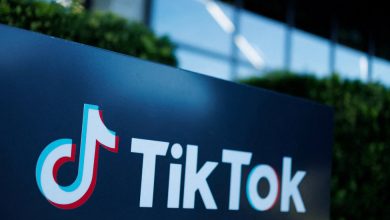
How a Solo Gig Can Give You a Stronger Retirement
Russ Eanes was burning out at his job, and he had just hit 60 — but he wasn’t ready to retire. A former minister in the Mennonite church, he had worked for a decade as an executive at a religious book publisher, but found himself in the unhappy role of helping to shrink the organization.
“I was getting really good at downsizing, but I just decided I didn’t want my life to be defined by firing people and selling buildings every few years,” he said.
Dissatisfaction with his work, coupled with the early death of a brother-in-law, propelled him to seek a new career path in 2018. “I had to find something I could do for the rest of my life that I would love doing,” he said.
Mr. Eanes was a hiker and cyclist, and he decided to fashion a new life of independent work around those interests and his spirituality. His first move was self-publishing a book in 2019 about his pilgrimage on the Camino de Santiago in Spain, followed by starting a business aimed at helping other writers publish their books. The pandemic interrupted his plans for a couple years, even briefly forcing him back to full-time work — but now his publishing enterprise is gaining altitude again.
“When you’re a writer, you need to cobble together an income unless you’re employed full-time by somebody — and very few of us have that anymore.”
Adding a few more years of work to your retirement plan can be one of the best ways to improve retirement security, and some find that the best way to keep income flowing in one’s later years is a sole proprietor business of the kind Mr. Eanes started. Entrepreneurship provides a bridge of income to a later retirement — that income can help you delay your Social Security claim, boosting those benefits. It might also help you save more for retirement.
Entrepreneurship comes in many flavors, but think of these businesses as a form of self-employment or gig work. Experts say such businesses often can be started for as little as $5,000 to $10,000 to incorporate, create a website and brand identity, and to put other necessities in place, like bookkeeping software.
A key challenge is finding the right idea for your business. That might mean continuing in your current field, or pursuing a new interest. But these solo entrepreneur businesses also come with some financial challenges. A big one can be financing your living expenses while you wait for the new business to start earning revenue. “The big risk is that your income will go down, at least temporarily and maybe permanently,” said Jill Schlesinger, author of “The Great Money Reset: Change Your Work, Change Your Wealth, Change Your Life.” “And for many people, the idea that you’re not receiving a regular paycheck is a little daunting.”
And as an entrepreneur, you’re responsible for the full cost of benefits your employer subsidized, such as Social Security payroll tax contributions, health insurance and retirement saving accounts.
Ms. Schlesinger was inspired to write her book by witnessing so many Americans rethinking their careers in the pandemic. “So many people have been making transitions and big resets,” she said.
Many Americans are surprised to find themselves having to leave full-time work sooner than they expected. Age discrimination, health problems, disability and job loss, or the need to care for a loved one, can intervene.
Forty-six percent of retirees reported this year that they left the work force earlier than planned, according to a survey by the Employee Benefit Research Institute. And there is a substantial gap between expectations about how long people will continue to work and reality. One in three workers told the survey’s researchers that they planned to retire at age 70 or older, or “not at all,” while only 6 percent of retirees reported that they actually worked that long. And just 11 percent of workers said they planned to retire before 60, compared with 33 percent of retirees who reported they retired that early.
For people like this, entrepreneurship offers one route to staying in the game.
“I don’t think people really know how retirement will play out,” says Craig Copeland, director of wealth benefits research at E.B.R.I. “No one counts on becoming sick or having a disability, or a layoff after working for a company for 10 or 20 years, and they aren’t building those kinds of events into their plans for retirement.”
The shock of no paycheck
Not getting a regular paycheck might be the most intimidating change that comes with taking the entrepreneurial path for those used to full-time work — and it requires some careful planning. Most new businesses need time to generate revenue, so try to start with a cash cushion to pay living expenses while you wait, advises Roger Wohlner, a freelance financial writer and fee-only financial planner who started a business eight years ago that combines those pursuits.
Mr. Wohlner said people should have enough money to cover “anywhere from three months to a year’s worth of expenses, just to make sure you can pay the mortgage.” But the specific need can vary depending on the type of business you start.
Ms. Schlesinger, who reports on personal finance topics for CBS News, counsels taking stock of all the resources at your disposal now — salary, bonuses and commissions, savings, emergency funds and even retirement accounts. Then, get a handle on debts and other liabilities.
Landing health insurance
Replacing employer-provided health insurance can be one of the biggest challenges solo entrepreneurs face.
If you are old enough to receive Medicare benefits, you’re in luck. When you enroll, file paperwork confirming that you had insurance from an employer after the mandatory enrollment age, which is 65, to avoid stiff late-enrollment penalties.
Too young for Medicare? You have several options.
First, if you have a spouse who is employed and has health insurance, investigate getting covered under that policy, since the benefits for the employee group might be stronger than what you could buy as an individual.
If that’s not an option, a plan on the Affordable Care Act insurance exchange will be your best bet. When you turn 65, you must switch from the exchange to Medicare.
Paying the tax bill
Income that you receive as an independent contractor won’t have income tax withheld. That means you’ll need to estimate annual income, and then make quarterly estimated federal and (possibly) state income tax payments.
Along with paying income taxes, you’ll be responsible for the self-employment tax, which covers the full cost of your contributions to Social Security and Medicare. As a self-employed worker, you can deduct half of these costs from your income taxes.
Setting up your business as a limited liability company or an S corporation can allow you to pay yourself via payroll and can make it easier to separate business and personal expenses.
Saving for retirement, whenever it comes
Along with allowing you to delay Social Security, working longer offers the opportunity to save more for retirement. But any matching contribution to a 401(k) that you may have had from your employer is now gone. Beginning in 2027, you may qualify for a new direct federal government match under provisions of the Secure 2.0 Act, signed into law late last year. Workers may qualify for a direct federal government 50 percent match up to $2,000 of a contribution to a retirement account. The match phases out at different income levels, but single filers can qualify with incomes up to $35,500 ($71,000 for joint filers).
Self-employed people often find it difficult to make an automatic, regular contribution of a percentage of their income to an account since they may not be paying themselves on a regular basis.
A better approach now will be to set a more flexible goal for an annual savings amount. That’s what Mr. Wohlner does with his own business. “I set a target for the year, and I’ll plan out the year, because there are certain months that my cash flow is better than others.”
You can contribute to an Individual Retirement Account, but these come with annual contribution limits ($6,500 this year, as well as a $1,000 catch-up contribution for people over age 50) that you may want to exceed.
One option is a Simplified Employee Pension I.R.A. This is a variety of the traditional I.R.A. that can accept contributions only from you as the employer. You generally can contribute up to 25 percent of your compensation, up to $66,000 for 2023. Under the Secure 2.0 Act, Roth contributions to a SEP-IRA will be allowed for the first time.
Another choice is a solo 401(k). These accounts are available only to self-employed people and a spouse who is employed by the business as well as any business partners. You can make two types of contributions — one as an employer, another as an employee. The employee contribution limit is the same as the 401(k) contribution limit for any traditionally employed worker — which is $22,500, or $30,000 if you’re 50 or older, in 2023.
The combined employee and employer contribution limits for 2023 are $66,000 or $73,500 for those 50 or older. Solo 401(k) accounts can be set up to receive either for tax-deferred or Roth contributions.
Self-employed workers who use high-deductible health insurance plans can contribute to Health Savings Accounts. There’s no employer match, but H.S.A.s can be used to pay medical expenses and they offer extraordinary tax benefits. Contributions can be used to meet deductibles and other out-of-pocket health care costs. But contributions can also be saved and invested for the long term. And the tax benefits are compelling: H.S.A. contributions are tax deductible, investment growth and interest are tax deferred, and withdrawals spent on qualified medical expenses are tax free.
Managing the unknown
Experts caution that a transition from full-time work to entrepreneurship not only takes longer than you might expect — but also often comes with twists and turns. “And where you end up will be different than you expect,” says Marc Miller, who as the founder of Career Pivot coaches older workers on career transitions. “If you are adaptable and resilient, you will often end up in a better but different place than you planned.”
Mr. Eanes learned that lesson quickly when he went solo. His first book was selling well in late 2019 and early 2020 when the pandemic began. Then sales cratered, and all of his in-person book presentations were canceled. “The bottom fell out of everything,” he recalled. “I was asking myself, ‘What do I do now?’”
He adjusted by hosting the book presentations online — and then accepted a full-time job with a company that offered online courses for older adults. He taught classes on writing and self publishing as well as on technology.
Mr. Eanes was able to go back to his writing and consulting work last year, leaving his full-time job and cutting back to just a handful of online courses.
He is now on Medicare, and he plans to claim Social Security in September, when he reaches his full retirement age. “I have the best health insurance I’ve had in 20 years, and Social Security will be a nice income backup that helps me continue to write and consult,” Mr. Eanes said. He’s also traveling, and he’s looking to start leading trekking tours in Europe.
Entrepreneurship has provided the bridge he needed from his early 60s to Social Security and Medicare, but it’s more than that. He sees work and retirement benefits as a perfect combination. “It’s a great way to stay active and engaged, and bring in the extra income I need.”




